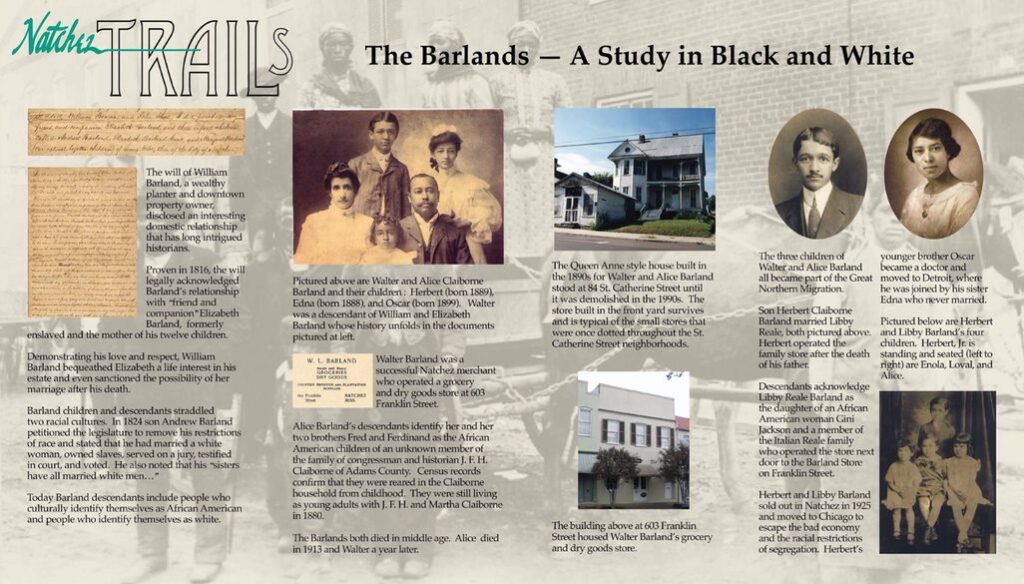Address
304 North Cardinal St.
Dorchester Center, MA 02124
Work Hours
Monday to Friday: 7AM - 7PM
Weekend: 10AM - 5PM
The Barlands were a large free family of color who owned a considerable amount of property in Adams County. The family had its genesis in 1789, when an enslaved woman, Elizabeth, and her four young children Andrew, Elizabeth, Margaret, and James were purchased and manumitted on the same day by Scotsman William Barland. William, who was the father of the children, and Elizabeth went on to have eight more children together: William, Adam, Agnes, David, George, Alexander, Susana, and John. Elizabeth was referred to as William’s “colored wife” in some records while he referred to her as his “friend and companion” in his will and they appear to have lived out their lives together raising their children under the same roof. He identified the reason he created a will because of “that strong natural affection I entertain for my children and the respect and esteem I have for their mother” and left them the bulk of his money and property, making provisions for his children’s education and maintenance.
William Barland was an enslaver and passed this practice and other cultural values down to his children. Several of the Barland children married white partners and it may have been a conscious strategy to align them with the white community to protect their property and insulate them against the restrictions that free Black people faced. Indeed, one son, Andrew, petitioned the Mississippi Legislature to be accorded the same rights as a white citizen. His petition indicated that although “his education, his habits, his principles and his society are all identified with your views, that he holds slaves and can Know no other interest than that which is common to the white population,” he nonetheless faced challenges from a local white man who sought to discredit him based on his “blood.”
The family was not entirely uniform in their choice of marital partners or racial identity. Some family members married into other free Black families. For example, John Barland married Mary Fitzgerald. Over the years, individual Barlands identified as white and Black. They had a substantial presence in the Natchez area persisting well past the era of slavery

Davis, Edwin Adams, and William Ransom Hogan. The Barber of Natchez (1954).
Davis, Edwin Adams, and William Ransom Hogan, eds. William Johnson’s Natchez: The Antebellum Diary of a Free Negro (1951).
Davis, Ronald L. F. The Black Experience in Natchez, 1720–1880 (1993)
Gould, Virginia Meacham. Chained to the Rock of Adversity: To Be Free, Black & Female in the Old South (1998).